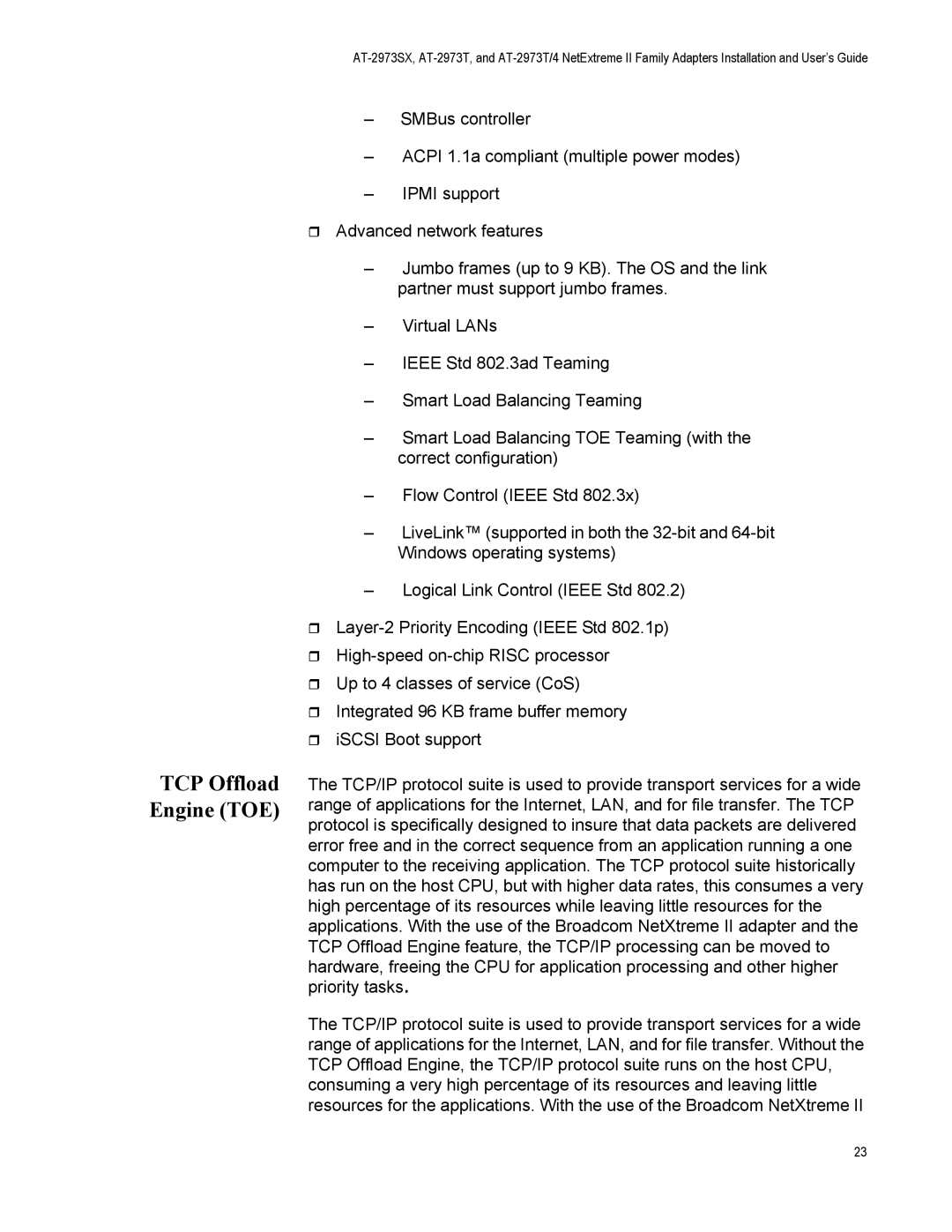TCP Offload Engine (TOE)
–SMBus controller
–ACPI 1.1a compliant (multiple power modes)
–IPMI support
Advanced network features
–Jumbo frames (up to 9 KB). The OS and the link partner must support jumbo frames.
–Virtual LANs
–IEEE Std 802.3ad Teaming
–Smart Load Balancing Teaming
–Smart Load Balancing TOE Teaming (with the correct configuration)
–Flow Control (IEEE Std 802.3x)
–LiveLink™ (supported in both the
–Logical Link Control (IEEE Std 802.2)
Up to 4 classes of service (CoS)
Integrated 96 KB frame buffer memory
iSCSI Boot support
The TCP/IP protocol suite is used to provide transport services for a wide range of applications for the Internet, LAN, and for file transfer. The TCP protocol is specifically designed to insure that data packets are delivered error free and in the correct sequence from an application running a one computer to the receiving application. The TCP protocol suite historically has run on the host CPU, but with higher data rates, this consumes a very high percentage of its resources while leaving little resources for the applications. With the use of the Broadcom NetXtreme II adapter and the TCP Offload Engine feature, the TCP/IP processing can be moved to hardware, freeing the CPU for application processing and other higher priority tasks.
The TCP/IP protocol suite is used to provide transport services for a wide range of applications for the Internet, LAN, and for file transfer. Without the TCP Offload Engine, the TCP/IP protocol suite runs on the host CPU, consuming a very high percentage of its resources and leaving little resources for the applications. With the use of the Broadcom NetXtreme II
23
